
As you move forward in UX design, you'll likely find you end up doing less ‘hands-on’ work. Less designing and doing, more delegating and reviewing—a big difference from your time as a junior UX designer.
This might make you think that a UX design portfolio is no longer necessary, but that’s incorrect. You can and should assemble a UX designer portfolio—just this one needs to focus on design skills and leadership skills.
Hiring managers look for more than just impressive designs when hiring a UX manager; they want to know the person behind the work. They want to gauge your abilities in leading user-centered design research, addressing team issues and conflicts, and keeping up-to-date with design trends for the future.
In this playbook, we share the tips you need to make sure your UX portfolio is suited to UX manager roles.
Do UX managers need a portfolio?
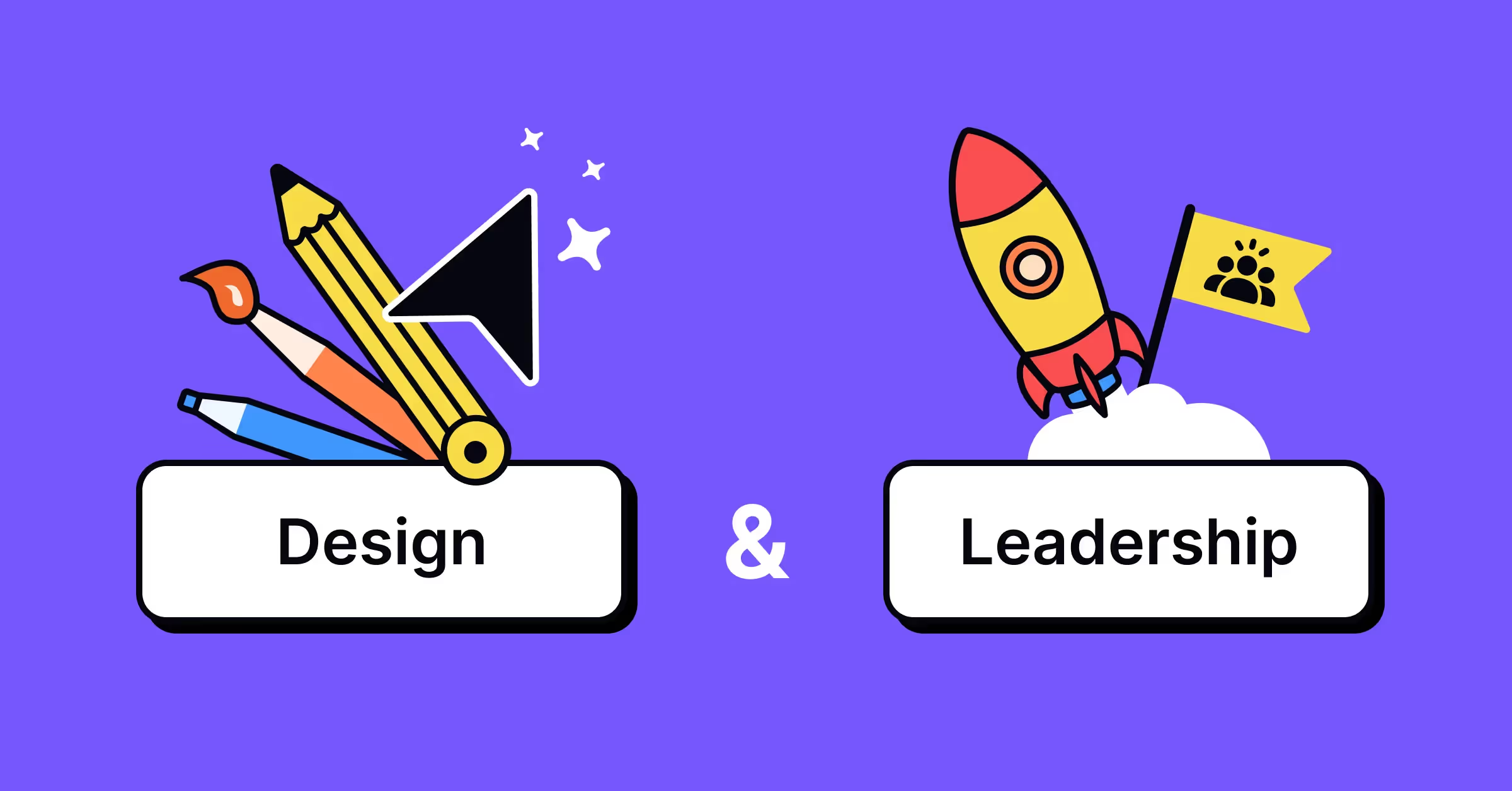
Put simply, yes. As a UX manager, you want to illustrate the design and leadership knowledge you have gathered from diverse working experiences.
Having a portfolio—along with a design resume and cover letter—makes it easy for a hiring manager to assess your user research process, design thinking abilities, and visual communication prowess. Along with your design experience, a portfolio is also key for sharing your thoughts on building and leading teams, addressing conflicts, and teaching others.
How does a manager’s UX portfolio differ from a junior portfolio?
Junior UX designers focus on communicating the UX design process, user stories, and accomplishments with case studies. A manager’s UX portfolio proves their skills go beyond just design and research.
Ideally, you should be able to show that you can meet business goals, develop design workshops, and create innovative UX processes for the team. Hiring managers expect strong design skills — it’s leadership skills that really differentiate a senior portfolio from a junior one.
Here’s what Brandon Telford, Design Team Lead at seoplus+, had to say about the key differences:
“Junior UX Designers are often very eager to show off their work, and mistakenly include a big assortment of projects in their portfolio. The problem here is that they run the risk of overwhelming visitors with information overload by showing off work that may not be their strongest.
A UX manager (or team lead) is likely to show only a few examples of their best work. Presenting a few projects that provide proof of skill is more valuable than a number of projects for greater impact.”
What to include in your UX manager portfolio

Hiring managers don’t just want to know how many projects you have worked on or your design skills. They want to assess if you have the adaptability, flexibility, and self-motivation to lead a team through challenges.
Here are the elements that you should feature in a manager UX portfolio.
Your personal information and experience
Start with an ‘about me’ section to show potential employers who you are, your work background, and your experience. Think of this section as an intro that draws the reader toward your UX case studies and design experiences.
Here’s what you can include here:
- Your name
- Professional statement
- Current job title and company
- Your location
- Relevant work history
- Professional accomplishments
- Contact details
It’s important to keep this section brief in the portfolio—you’ve got a CV to share the details and your portfolio should primarily focus on sharing and showcasing your skills.
{CTA}
Your UX design process and case studies
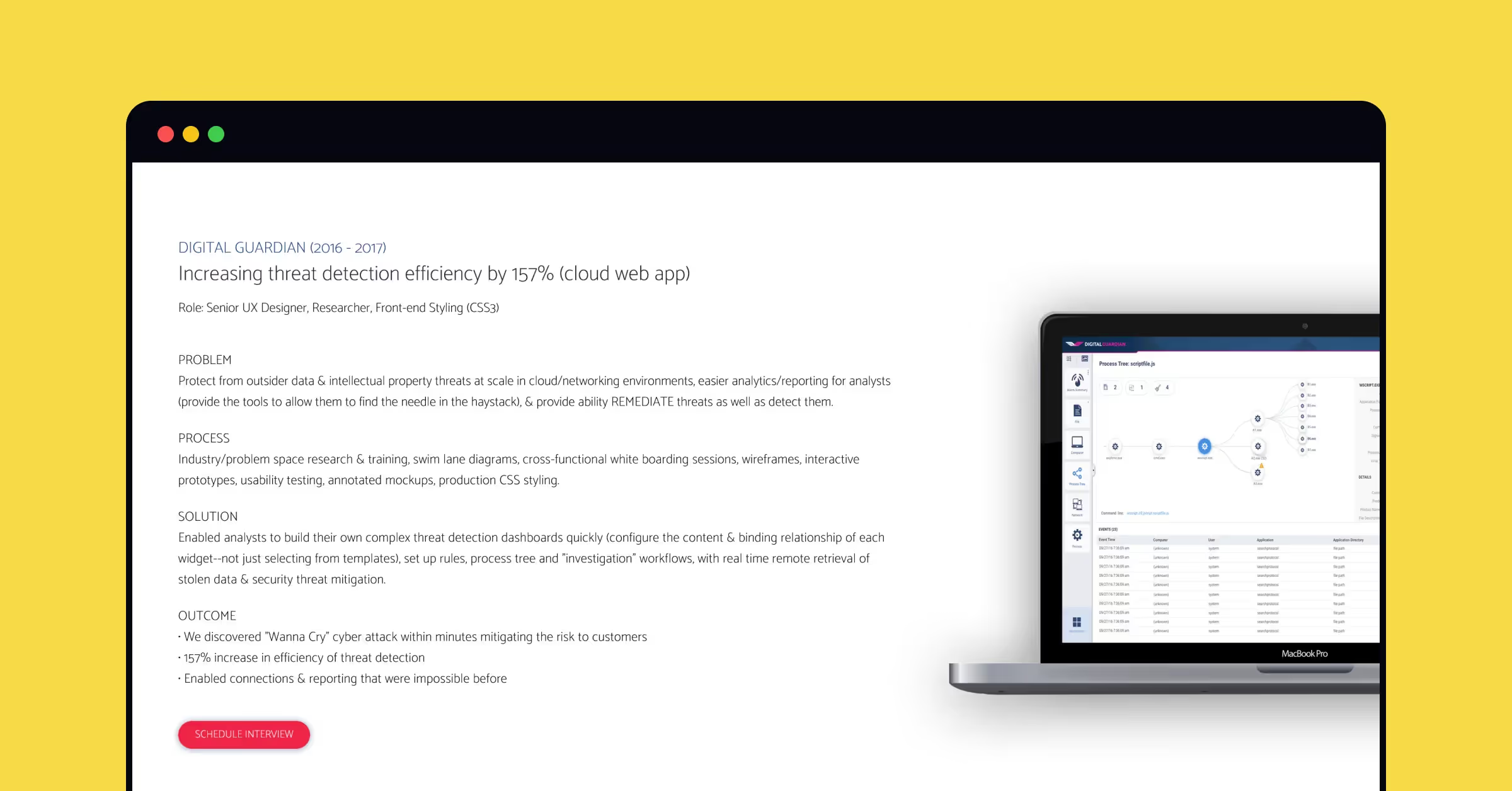
A typical UX workflow involves a series of stages, including user research, analysis, prototyping, testing, and more. How you create the polished final product varies depending on your design process.
As a UX design lead, you want to highlight where you made key decisions that guided the design process. Explain how you managed the project to shape the final design, and how you used your leadership and decision-making skills to get the job done.
Also, make sure you share how these UX designs made an impact on the business. UX design leads need to be able to hit goals and make design work towards overarching company goals. Outline how you established, monitored, and hit goals.
For example, check out how UX Design & Research Leader, Jeremy Bird, lays out case studies in his portfolio:
The case study includes the situation, task, action, and results, as well as Jeremy’s role in the project. The portfolio website is a great example of creating an online portfolio focused on leadership and design.
Your business experience and acumen
UX managers are the contact point between the UX/Design team and the rest of the organization. They need to be able to communicate with other team leads about the work the UX design team is doing and vice versa. Collaborating with other teams is a key part of the UX manager role.
It’s important to show that you’ve got the skills needed to advocate for UX design in your organization. This includes creating the required documentation, like project briefs, KPIs, project reports, and more. Share previous documentation you’ve created in this regard—blurring out confidential information—to highlight your leadership communication and presentation skills.
The tools you use
You’ve likely used different tools during your time as a junior UX designer. These tools include UX tools—like Uxcel, Figma, and Sketch—and management tools—such as Airtable, Drive, and Loom.
This isn’t limited to the software tools themselves, you can also include any ‘tools’ you’ve developed, like an expert review framework, a self-evaluation form, a briefing canvas, or any other tool.
Discussing these tools shows your ability to support and drive a team to accomplish the desired product outcome.
Your leadership skills and outcomes

It’s essential that your UX manager portfolio displays your competency as a manager. You can highlight your leadership outcomes by adding professional references, key metric performance at past roles, and previous team details.
You should talk about the skills that make you a better manager, and how your approach to leadership has changed over the years to adapt to modern workplaces. Use examples of challenges you’ve faced as a manager and how you’ve overcome them.
Jeremy’s portfolio dedicates a whole page to leadership skills and approach to management—starting with his leadership philosophy.
You might also be expected to head up hiring for the UX team if joining a smaller organization. If you’ve got experience hiring UX designers, share it. You can talk about searching UX design job boards and using platforms like Uxcel Hire to hire remote global UX design talent and how you’ve grown your team at the last job.
Now that you know the what, let's look at the how.
Step-by-step guide: here’s how to create a UX manager portfolio
Conceptualizing your first UX portfolio as a manager or giving the existing one a makeover? Check out the steps below to get started.
Step 1: Gather projects and workflows
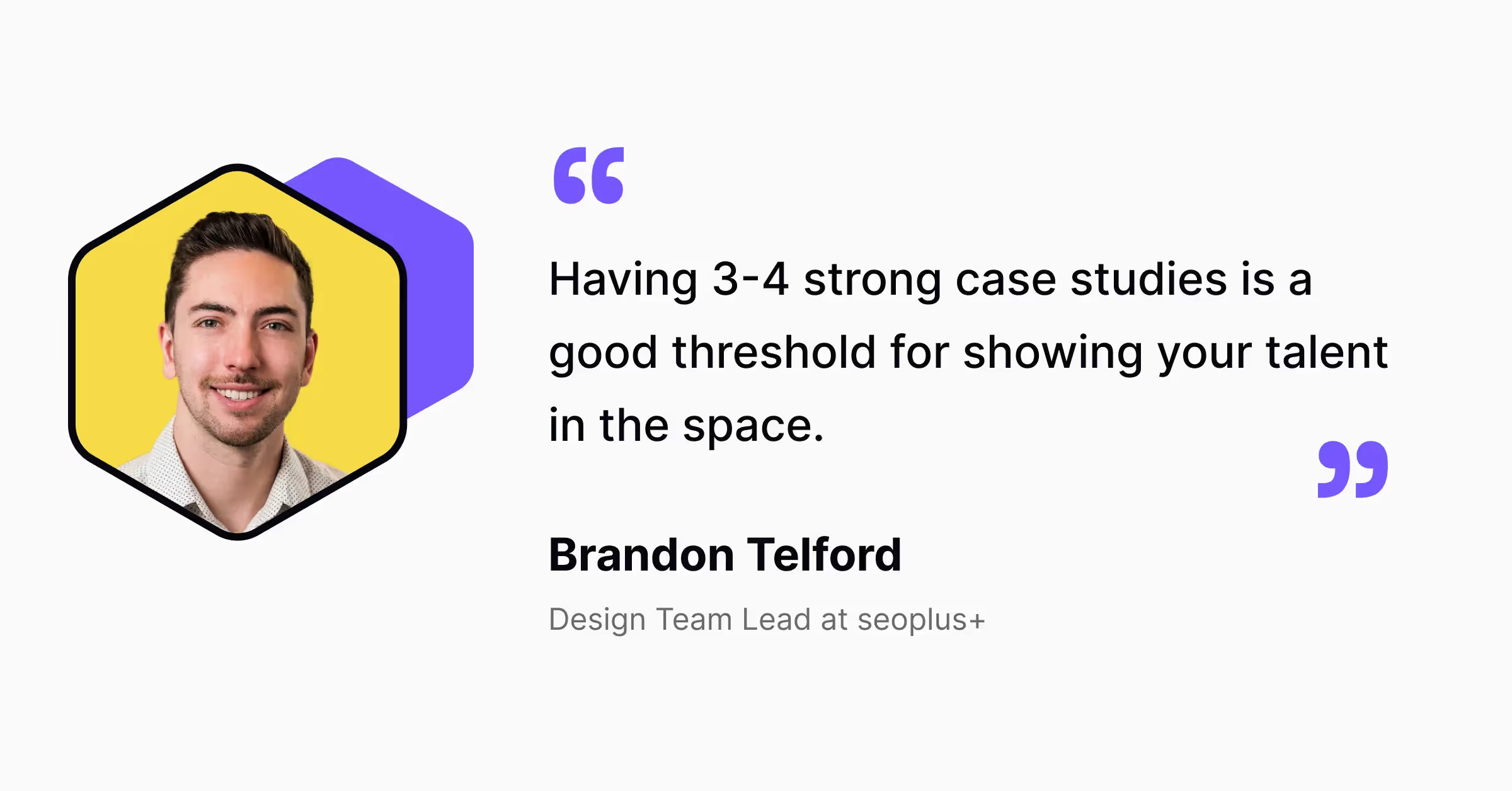
The first step in creating an impressive portfolio is to choose outstanding projects that reflect your UX design skills. Pick projects that showcase your skills in different areas like:
- User research: shares your understanding of frameworks that assess customers’ pain points.
- Wireframing: shows how you communicate customer journeys with the team.
- Prototyping: demonstrates your ability to test minimum viable products (MVPs).
- User testing: reveals if your user-centered interaction design actually helps real users.
- Analytics: supports the effectiveness of your UX decisions with data.
These are projects that should be included in any portfolio—junior or senior. A manager’s portfolio website should also showcase design workflows that you have built while guiding teams.
Only include high-quality, relevant work and make sure your portfolio has a clean layout and easy-to-understand information architecture.
“Having 3-4 strong case studies is a good threshold for showing your talent in the space,” says Brandon.
Step 2: Write leadership-focused case studies on select projects
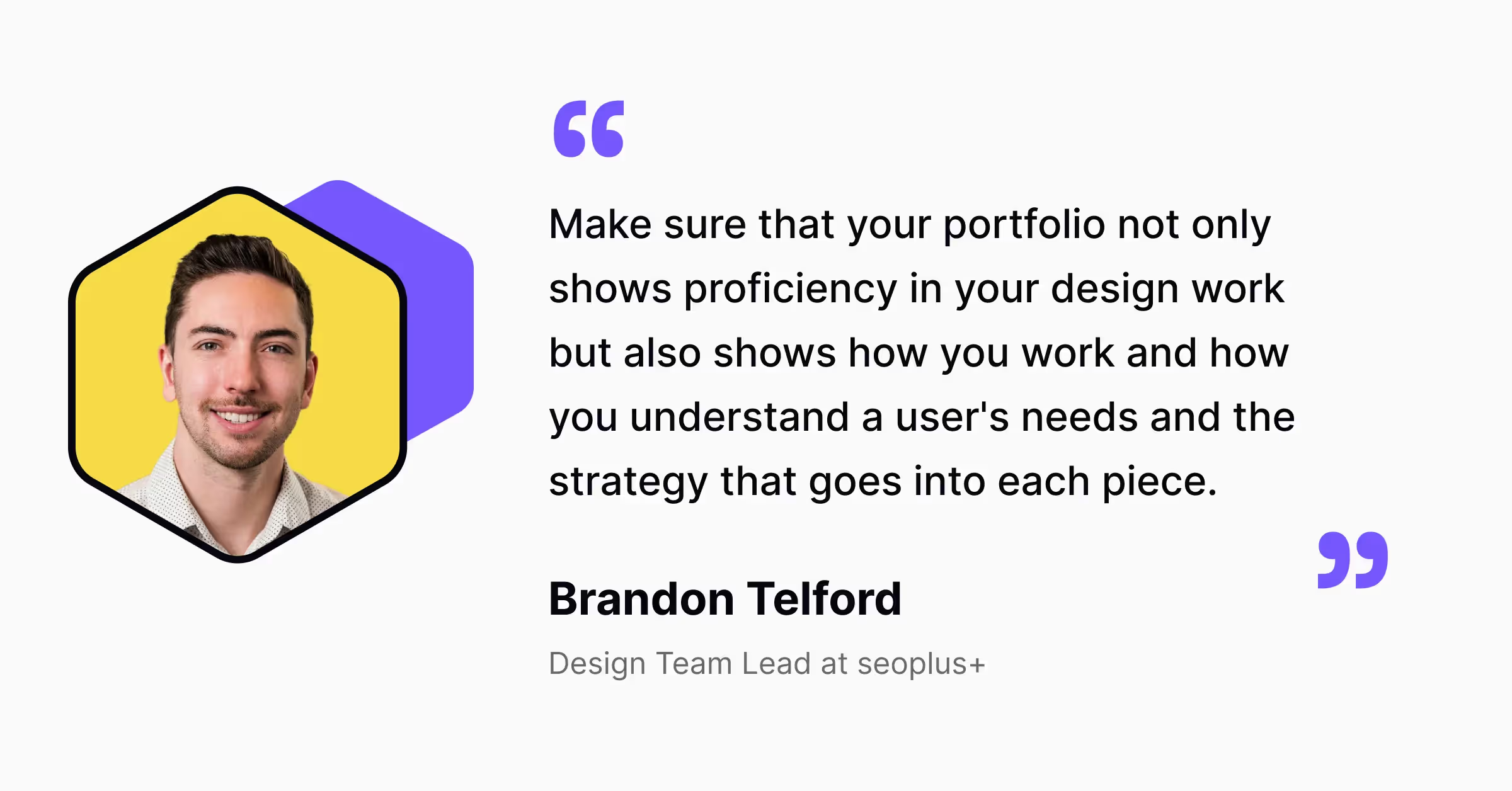
Now, you can dive deep into the projects relevant to the job you are applying for. If you're aiming for the UX manager position at a web design company, you could show different landing pages or email templates you've created in the past.
Case studies enable you to share your design process in your portfolio.
- How did you uncover users’ issues and come up with the idea?
- How did the idea develop with each cycle of feedback?
- Was the final outcome successful in helping the company get more leads or onboard users faster?
Answering these questions will help the hiring manager understand your UX process better.
It’s also important to use case studies to highlight how your management impacted the project. Discuss how you approached the project and delegated work in order to hit deadlines and goals. This is what sets you apart from a junior UX designer.
Here’s what Brandon had to say about this section of a UX manager’s portfolio:
“Make sure that your portfolio not only shows proficiency in your design work but also shows how you work and how you understand a user's needs and the strategy that goes into each piece.”
Step 3: Highlight leadership outcomes

This section is where you really differentiate your portfolio from that of a junior UX designer. Talk about the results of your decisions and actions—the more quantifiable, the better. This highlights your managerial role in the UX project and demonstrates the skills and knowledge you have in relation to managing UX design projects and teams, as we heard from Brandon:
“A UX manager understands that it isn't just the visual elements of the project that needs showcasing, but also the results and the strategies. This method of project storytelling truly builds the case study and is likely the most important factor of the portfolio.”
Here are some ideas on what you can talk about in this section:
- Did you set up design workflows that reduced the turnaround time by a certain percentage?
- Were you able to upgrade in-house team skills with workshops?
- Can you share how the team grew in size under your guidance?
You can also share the feedback from previous managers and C-suite executives you have collaborated with. For example, you could ask a previous manager—likely the CEO if at a smaller business—to provide a project-specific reference to back up your claims.
Step 4: Create your portfolio
Now that you’ve got all your ducks in a row, you can start piecing together your UX design portfolio. You’ve got a number of options with UX portfolios—including a PDF portfolio and a physical copy—but we suggest opting for an online portfolio website. It’s easy to build and update, and can be shared with hiring managers in a flash.
Don’t forget to get feedback from peers once you’re done, and make sure you run a spelling and grammar check to avoid any silly mistakes. Once you have addressed the feedback, you’re ready to apply via a design job board and share the portfolio with hiring managers and recruiters.
Want to make your UX portfolio stand out to hiring managers? Check out these top 11 online portfolio tips for bringing your portfolio to life.
Build a design-first organization with Uxcel
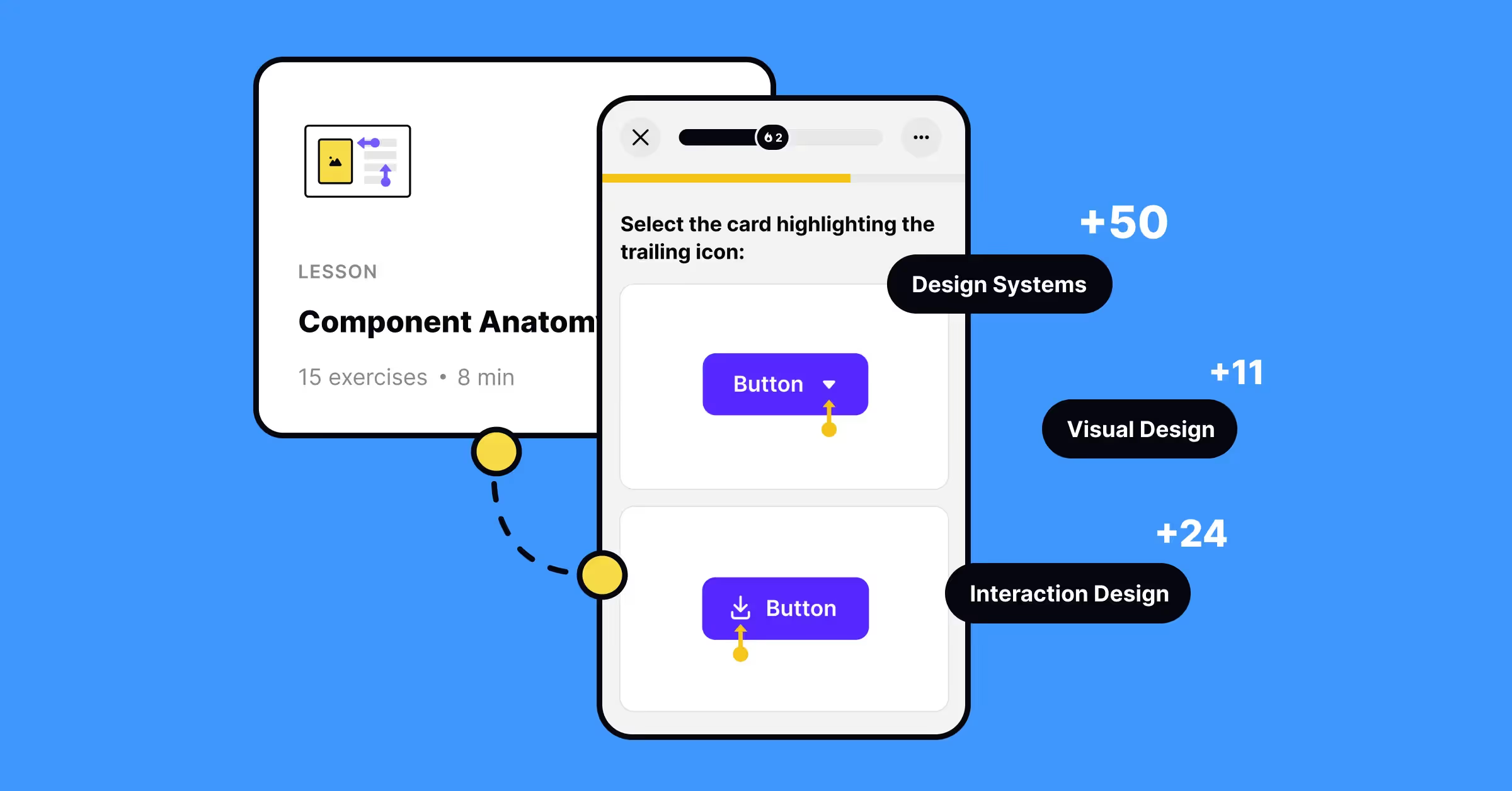
UX manager portfolios ultimately have a lot in common with junior designer portfolios; they share your skills, experience, and expertise. What really differs is the angle—whilst a junior UX designer focuses on the tasks and designs they complete, a UX manager focuses on the bigger picture.
A UX manager needs to know how to lead projects, delegate work, structure research, and create tangible impact. They need the resources and knowledge to improve a design team, as well as the leadership skills to manage the team — such as resolving conflicts or identifying high-performers.
If you’re a UX manager — or aspiring UX manager — check out how Uxcel for Teams can help you do your job better with an array of team learning and assessment tools.
Start your 14-day trial today to start upskilling your team, finding talented candidates, and screening UX skills.




